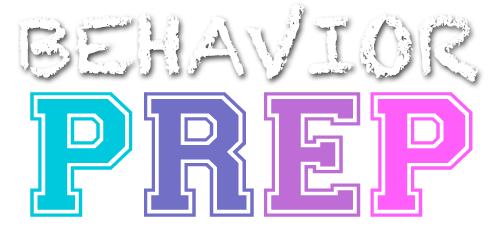G.15 Design and evaluate procedures to promote stimulus and response generalization
Designing and evaluating procedures to promote stimulus and response generalization involves creating interventions that help individuals apply learned behaviors across different settings, people, and stimuli (stimulus generalization) and encourage them to use a variety of responses that achieve the same outcome (response generalization). Evaluation ensures that the individual can successfully generalize the learned behavior beyond the training environment.
Program Common Stimuli
This component involves incorporating stimuli or materials that are commonly encountered in the natural environment into the training program. It aims to increase the likelihood of generalization to similar stimuli in real-world settings. Example: When teaching a child to identify shapes, include various everyday objects or pictures that depict those shapes (e.g., a round clock, a square window, a triangular road sign) in the training materials.
Train Loosely
Training loosely refers to varying the training conditions to promote generalization across different settings, people, and materials. The goal is to prevent over-reliance on specific cues or contexts during training. Example: Teach a child to follow instructions in different rooms, with different instructors, and using different materials (e.g., worksheets, books, digital devices) to encourage flexibility and generalization of the skill.
Train Many Examples
Training with a wide range of examples helps learners generalize skills across different instances or variations of the target behavior or stimulus. This promotes the ability to respond to novel stimuli or situations. Example: Teach a child to identify animals by presenting a variety of pictures, toys, and videos that feature different types of animals (e.g., dogs, cats, birds, fish, elephants).
Mediate Generalization
Mediating generalization involves teaching individual skills that can assist them in transferring and applying learned behaviors across settings or situations. Example: Teach a student with autism self-monitoring strategies, such as using a checklist or self-rating scale, to assess their own behavior and ensure consistent performance in different classroom activities.
Introduce to Naturally Maintaining Contingencies
This component involves providing opportunities for individuals to experience the natural consequences and reinforcements that occur in the environment. By doing so, learners are more likely to generalize the behavior to natural settings. Example: Teach a teenager with ADHD to complete homework assignments by emphasizing the natural reinforcement of earning good grades and receiving positive feedback from teachers.
Use Indiscriminable Contingencies
Indiscriminable contingencies refer to making the reinforcement or consequences for a behavior less predictable or obvious. This encourages generalization of the behavior to different situations where the same contingencies may not be explicitly present. Example: Reinforce appropriate social greetings randomly throughout the day to encourage the child to use greetings in various social interactions without relying on specific cues or prompts.
Train To Generalize
Directly teaching individuals to generalize their skills can enhance their ability to transfer learned behaviors across different settings and contexts. Example: Teach a person with developmental disabilities to apply money skills (e.g., making purchases, counting change) in different stores or community settings to promote generalization of the learned skills.
These components maximize the generalization of learned behaviors and skills beyond the training context. By systematically incorporating these strategies into ABA interventions, practitioners aim to ensure that individuals can apply their skills across various settings, stimuli, and situations, leading to meaningful and functional behavior change.
